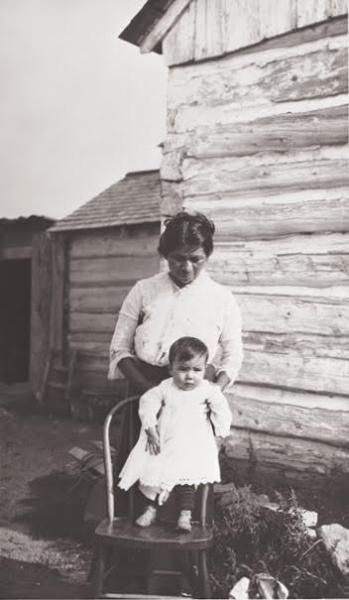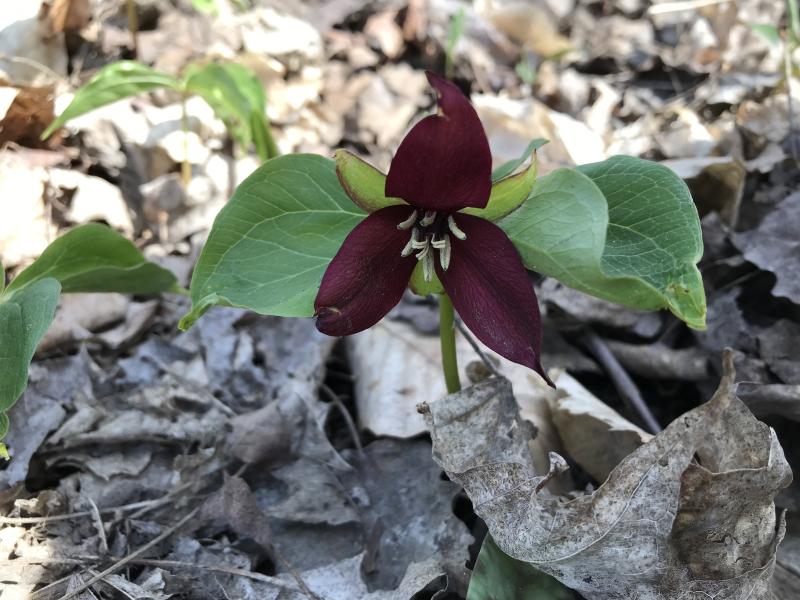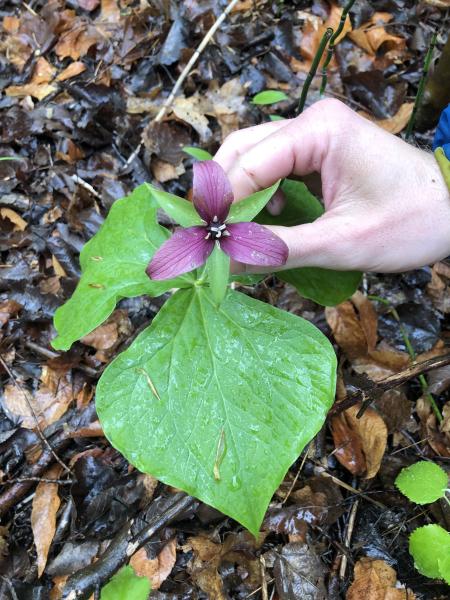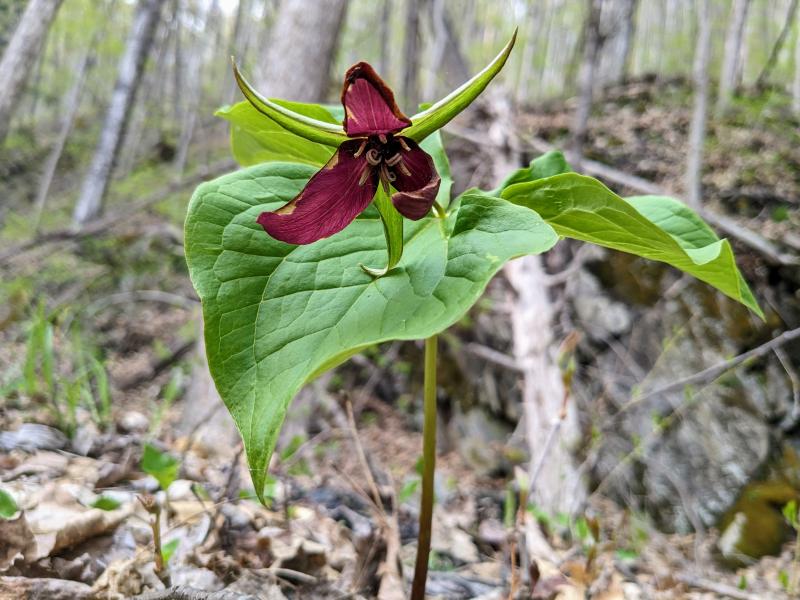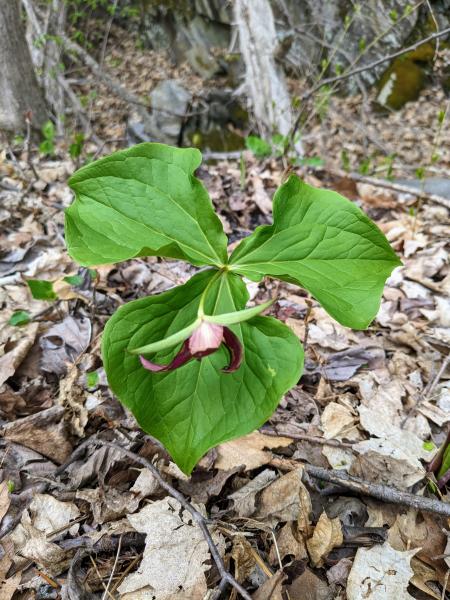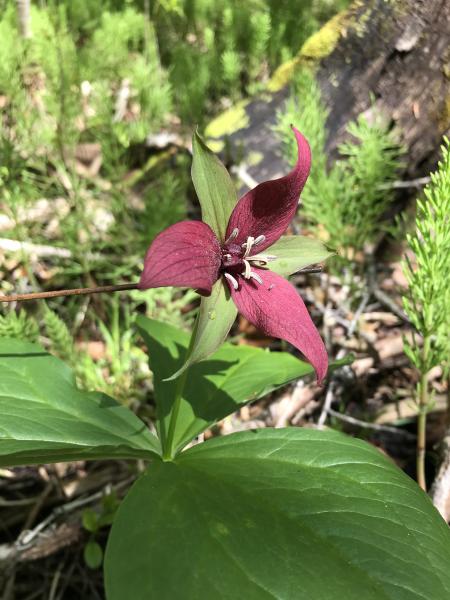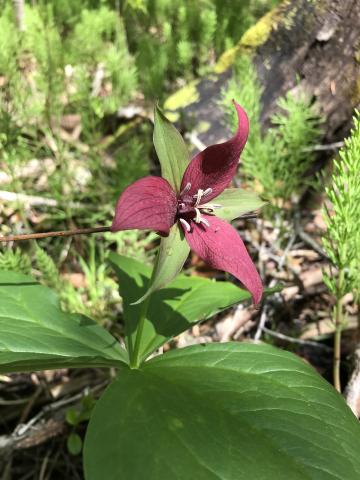
Names and Their Meanings
Red Trillium - Trillium erectum
White Trillium - Trillium grandiflorum
Red Trillium
Description
Red Trillium is a slow-growing species that arises on one or up to 5 stems from stout underground rhizomes. Each scape bears a single whorl of three broadly ovate, diamond-shaped leaves (technically bracts), that clasp its 6-24 inch stem. Perched 1-4 in. Above the leaves is a single, nodding, chocolate to crimson-purple flower with three petals curved slightly backward, and three green sepals behind the petals that occasionally have maroon streaks. The flower blooms between April and June, petals withering in 2-3 weeks, leaving a fleshy, dark maroon, berry-like fruit.
Conservation Status
S5 (Secure) in Ontario, New York, and Québec
White Trillium
Conservation Status
S5 (Secure) in Ontario, New York, and S3 (Vulnerable) in Québec
USES
Across the literature on Haudenosaunee and Anishinaabe uses of Trillium, there are three main uses: the first is as a root tea for treating and balancing women’s reproductive health; the second is as a root poultice for tumors, boils or abscesses; and the third is as an expectorant tea to treat coughs and similarly, as an astringent for diarrhea or dysentery (it has drying qualities). Waugh’s research in Manitoulin Island in 1916 revealed that Ojibwa in that community applied the crushed roots of Red Trillium, tied on, to treat a boil or abscess; and after the swelling breaks, apply crushed staghorn sumac or curly dock roots to stave the running.
Frances Densmore also wrote about Anishinaabe uses of Trillium, noting that the White trillium were used as an astringent and tonic expectorant, and as a root tea medicine for rheumatism, diabetes, cramps, and soreness in the ears. Erichson-Brown’s compiled research of ethnological research revealed that across Anishinaabe and Haudenosaunee communities, trillium root was recognized as astringent, antiseptic, somewhat expectorant, and tonic, used to treat excess flow and flooding of menses, as well as a toner after childbirth (red trillium), an emmenagogue (white trillium), a hormone regulator for night sweats, and an astringent for diarrhea. For these conditions, roots are made into a tea with water or milk. In addition, trilliums were used as antiseptics for ulcers, sores, tumors, and inflamed swelling. For external conditions where one is in need of drawing out infection, or breaking up inflammation, roots are pounded into a poultice.


